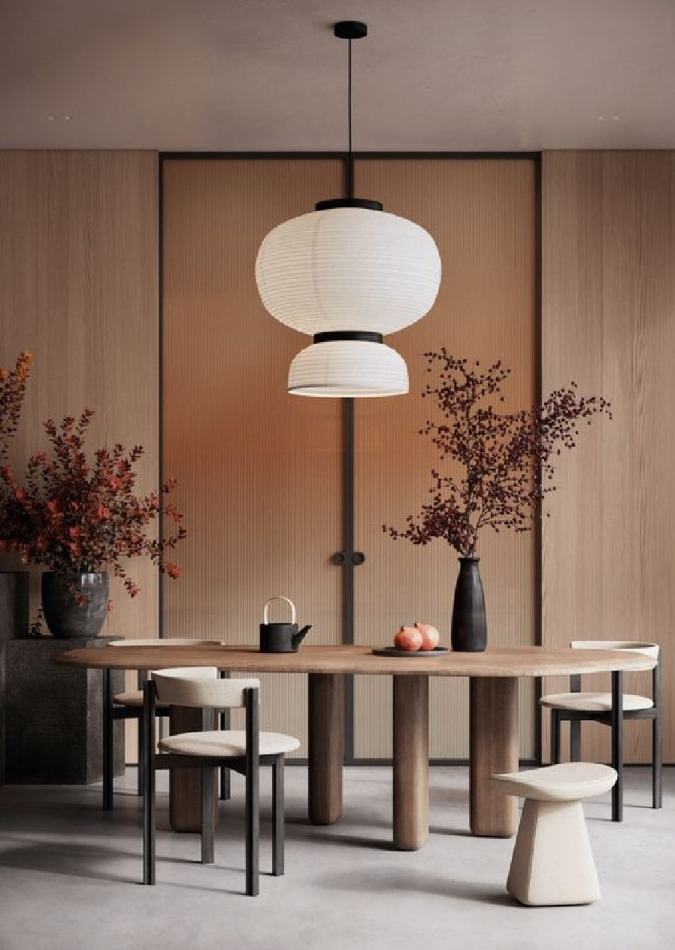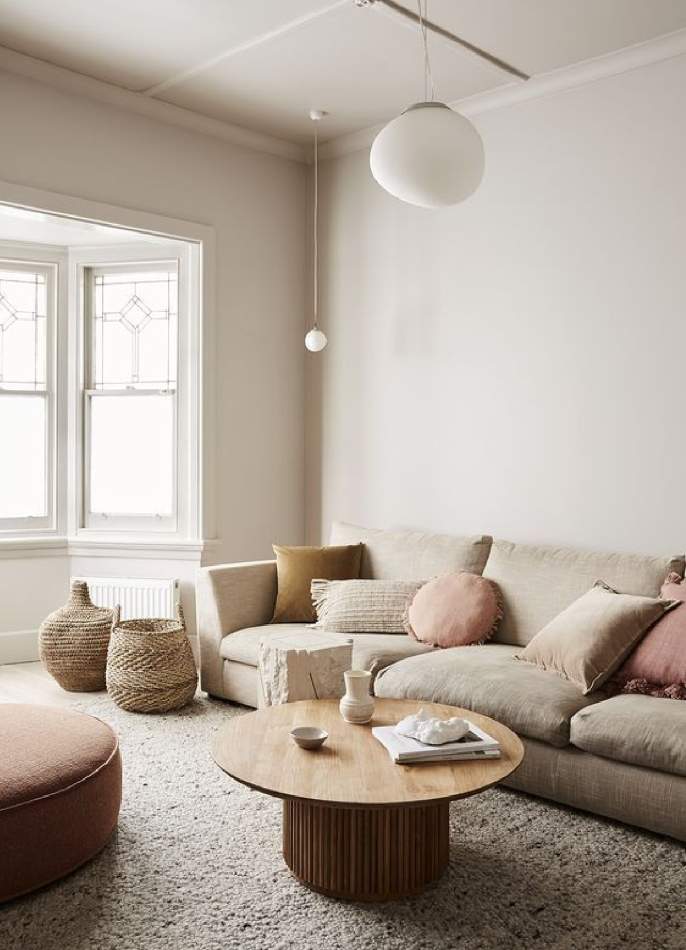Japandi style: what is it? What is its role in modern interior design?

Japandi style furniture is among the most interesting trends in modern interior design. So let’s take a closer look at it.
This style was born from the union of two living philosophies that have many points in common: Japanese and Scandinavian. From the meeting of these two cultures, a sober and elegant style was born, characterised by spaces furnished in a very harmonious way that inspires calm and relaxation.
What does the Japandi style consist of?
As its name suggests and as we have indicated, the Japandi style stems from the meeting of Scandinavian and Japanese interior design . Both of these traditions pursue minimalism and simplicity and lead to the creation of environments where organisation and functionality are prioritised.
While this style may seem very simple on the surface, it actually requires more than careful design work. In fact, each furnishing element must be chosen with great care and the overall design must be well balanced and integrated to create a harmonious and pleasant living environment.
In particular, the great protagonists of Japandi furniture are wooden furniture and handcrafted objects. Craftsmanship, with its natural imperfections, can be found in almost all the objects that make up these furnishings: in the furniture, carpets, textiles and decorative elements in general.
The wood is often left in its natural colouring and is predominantly light in colour. The most commonly used woods in the Japanese tradition are white oak and maple, but there are also excellent examples of Japandi stylerooms made of dark woods, such as teak.
In rooms furnished in the Japandi style, light tones prevail, which are enriched by touches of colour provided by carefully selected furnishings. In both Scandinavian and Japanese traditions, interiors appear bright, thanks to the use of grey, beige and white elements. To balance these light tones, elements of an earthy colour palette and darker shades of grey can be used, if one wishes to create an ambience with a calm and relaxing atmosphere, or decorations of a deep blue or deep green, if the aim is to create a luxurious and elegant space.

The importance of complements in the Japandi style
Furnishing accessories are central to Japandi interior design. These elements not only have the task of adding colour and decorating the space, but must also balance the voids created by the presence of a few essential-looking pieces of furniture.
In a Japandi style environment, textiles are never lacking, in a colour contrasting with that of the furniture. For cushions, curtains, bed linen and other textiles in the home, yarns of vegetable origin and natural appearance are used, mainly jute and linen.
Another typical element that characterises Japandi furnishings are plants, which are used to add a touch of colour and to fill spaces, but also to testify to the strong bond with nature typical of these environments. For the same purpose, decorative elements are frequently used, such as vases, lamps or bowls, which are made by weaving strips of bamboo or wicker.
Typical of Japanese culture, on the other hand, is the use of elements made of rice paper. This very delicate yet highly decorative material is frequently used to create lamp and chandelier shades, but can also be used to make beautiful wallpaper or decorative panels.

How can you get the most out of Japandi style furniture?
To create eye-catching Japandi furniture, you need to strike a balance between Scandinavian minimalism and essentiality and the delicate elegance of Japanese interiors. Carefully selecting designer furnishings and choosing high-quality furniture and accessories is a first step to achieving this.
When furnishing the living and sleeping area, the same guidelines are followed, with a few differences, which are due to the specificities of these rooms. For the living room and lounge, the general indication is to create elegant and essential spaces, characterised by a few pieces of furniture with great functionality. Ideally, rooms furnished in perfect Japandi style are very bright and flooded with natural light. When it is not possible to use large windows or panoramic windows, one can compensate with artificial light, which should however recreate as much as possible the temperature and intensity of natural light.
In the bedroom, it is preferable to use a low bed, in perfect Japanese style, and make sure that the atmosphere is calm and relaxing. Space is left as free as possible and, to make the room even more comfortable, a large carpet or soft bedside rugs can be used, to be placed in either case on either side of the mattress. In particular, those who wish to give the furniture an original touch can decorate the walls with wallpaper showing naturalistic subjects, such as plants, flowers and animals.
Choose a top-notch woodworking shop.
We have over 50 years of experience!
Contact Us!
Il Piccolo, a second generation family-run joinery, opens its own showroom in Lugano. With over 50 years of experience, Il Piccolo brings with it a wealth of technical and design knowledge of the highest level, thanks to the numerous interiors designed and furnished all over the world. In particular, Il Piccolo has a wealth of experience in the design and production of several corner wardrobe models. Finally, Il Piccolo represents the world’s most prestigious furniture brands.
Our company designs, manufactures and sells the best of made-in-Italy interior design, following the customer from the design to the realisation, delivery and installation of the work, supplementing the process with a precise and professional assistance service. Looking for the ideal corner wardrobe for your room? CONTACT



